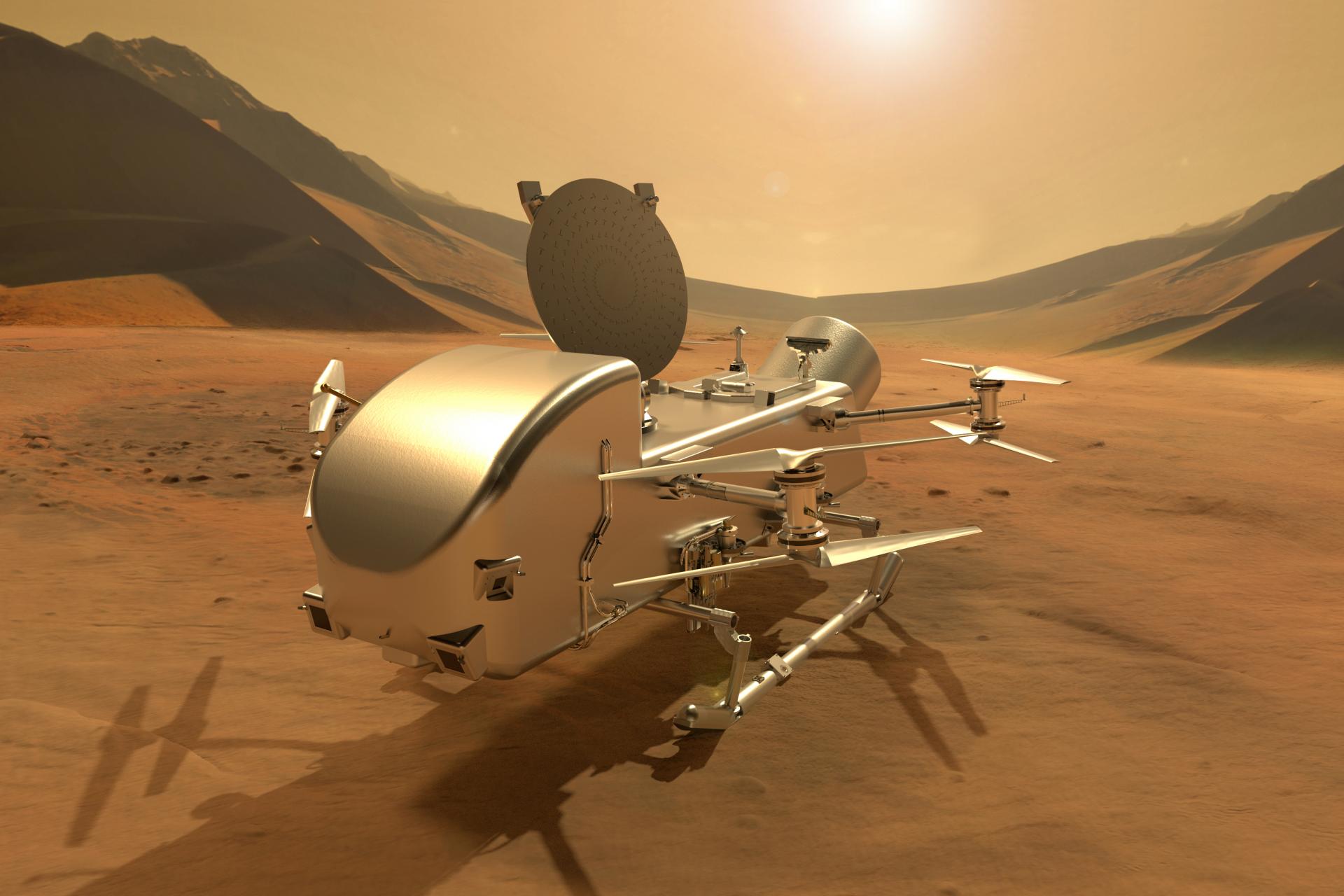News
A Rotorcraft Designed for the Dunes of Titan
That’s One Sandy Ocean Moon
Unlike the deserts of Earth with their dunes full of coarse, irritating sand that gets in every crack and crevice, Saturn’s desert-like moon Titan has some peculiar dunes.
Titan, an ocean world, is not dry like the Sahara or Gobi Deserts. In fact, it’s the only moon in the solar system with a dense atmosphere, which (at minus 290 degrees Fahrenheit or minus 179 degrees Celsius) supports an Earth-like hydrological cycle not of water but of methane: clouds, rain and liquid flowing across the moon’s poles to fill lakes and seas.
What’s odd, though, is that more than 1,200 miles (2,000 kilometers) away from those lakes and seas is an extensive field of organic dunes encircling the moon’s equator. With no liquid to dissolve materials and no strong winds to form them, where did the dunes come from? And what’s more, what are they made of? Nobody knows.
Researchers believe that the possible candidates of Titan sand — including tholin (a Titan aerosol analog), water ice and some simple organics — are all less stiff, softer and more brittle than the silicate sand we’re used to on Earth’s surface.
The only way to find out for sure is to explore Saturn’s largest moon, which is exactly what the Dragonfly mission is designed to do.
NASA’s Dragonfly mission - designed, built and managed by the Johns Hopkins Applied Physics Laboratory in Laurel, Maryland - will explore Titan’s environment to sample materials and determine surface composition in different geologic settings.
This includes the capability to explore diverse locations to characterize the habitability of Titan’s environment, to investigate how far prebiotic chemistry has progressed, and even to search for chemical signatures that could indicate water-based and/or hydrocarbon-based life.
Watch an animation of Dragonfly in action on Titan, and learn more about the mission.
